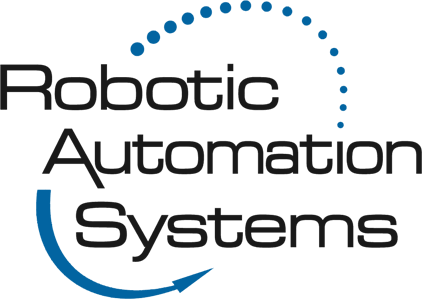Types of Robot Grippers: What You Need to Know
Types of Robot Grippers: What You Need to Know
Robot grippers are an essential component of robotic systems, enabling robots to interact with objects and perform various tasks in manufacturing and automation settings. These grippers come in different types, each designed to suit specific applications and object manipulation requirements. We will explore the key varieties of robot grippers, shedding light on their functionalities, advantages, and common applications. At Robotic Automation Systems, we fabricate all types of robot grippers to create whatever you need.
Types of Robot Grippers
Mechanical Grippers
Mechanical grippers are the most common and widely used type of robot grippers. They operate on a simple and robust mechanism, using jaws or fingers to securely grasp and hold objects. Mechanical grippers can be either two-fingered or three-fingered, depending on the gripping requirements. They can exert considerable force, making them suitable for handling heavy or rigid objects. Mechanical grippers find applications in industries such as automotive manufacturing, where they are used for material handling, assembly, and pick and place operations.
Vacuum Gripper
Vacuum grippers utilize suction force to hold and manipulate objects. They employ a vacuum system that creates a negative pressure to generate grip. Vacuum grippers are ideal for handling flat or smooth objects, such as sheets of glass, electronic components, or thin sheets of metal. They are versatile and easily adjusted to accommodate different object sizes and shapes. Vacuum grippers are commonly used in industries such as packaging, electronics, and automotive manufacturing, where gentle and precise handling is required.
Magnetic Grippers
Magnetic grippers employ powerful magnets to hold ferrous objects securely. They are particularly suitable for handling metal parts or objects with flat, smooth surfaces. Magnetic grippers offer quick and efficient grasping capabilities and can withstand harsh environments. Industries such as metal fabrication, steel manufacturing, and recycling frequently utilize magnetic grippers for automated material handling and sorting processes.
Pneumatic Grippers
Pneumatic grippers utilize compressed air to operate the gripping mechanism. These grippers are known for their speed, force, and adaptability. Pneumatic grippers can exert a significant gripping force while maintaining a lightweight design. They are commonly used in applications requiring rapid pick and place operations, such as high-speed assembly lines or packaging processes. Pneumatic grippers offer fast cycle times, making them an efficient choice for industries like food and beverage, pharmaceuticals, and consumer goods manufacturing.
Electric Gripper
Electric grippers are driven by electrical actuators and offer precise control over gripping force and position. These grippers provide excellent repeatability, allowing for accurate and consistent object manipulation. Electric grippers are often preferred in applications that require delicate handling, such as electronics assembly, medical device manufacturing, and laboratory automation. They offer programmable force and speed settings, making them highly adaptable to various object shapes and sizes.
Considerations for Gripper Selection
Several factors should be considered when selecting a gripper for a specific application, including the object characteristics, required gripping force, cycle time, environmental conditions, and integration compatibility with the robot system. It is crucial to choose a gripper that can securely hold the object without causing damage and provide the necessary level of control and adaptability for efficient and reliable operations.
Contact Our Team
Robot grippers are integral components of robotic systems, enabling robots to interact with objects and perform diverse tasks. Mechanical, vacuum, magnetic, pneumatic, and electric grippers each offer unique advantages and find applications in different industries. Understanding the key types of robot grippers and their functionalities allows businesses to make informed decisions when selecting the appropriate gripper for their specific requirements. By having the team at Robotic Automation Systems fabricate the right hardware, manufacturers can optimize productivity, enhance efficiency, and achieve reliable and precise object manipulation in their automated processes.
